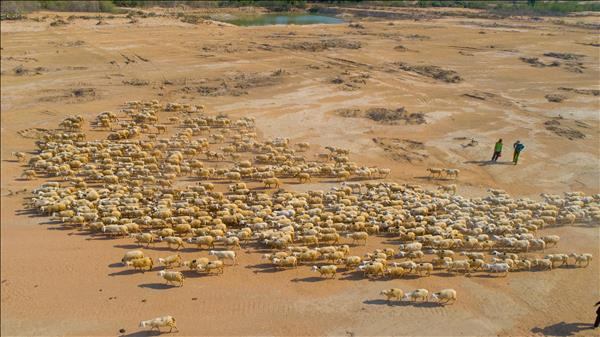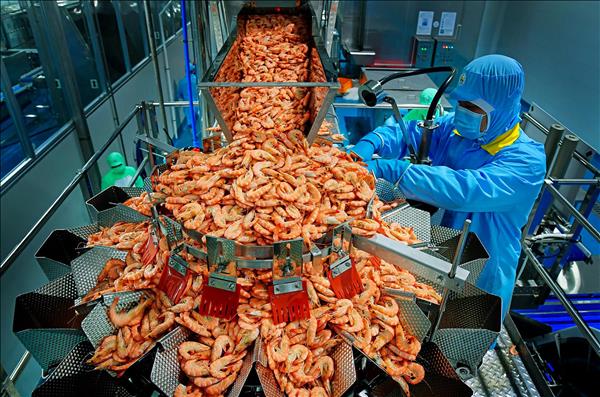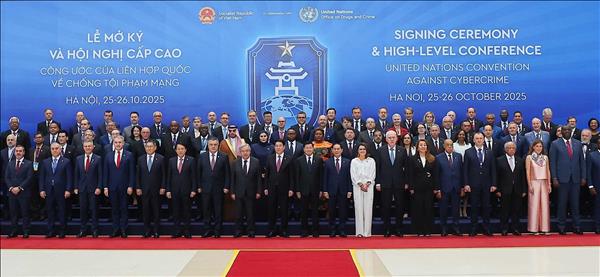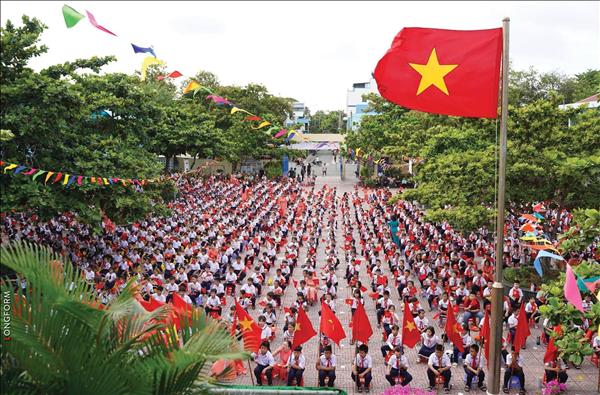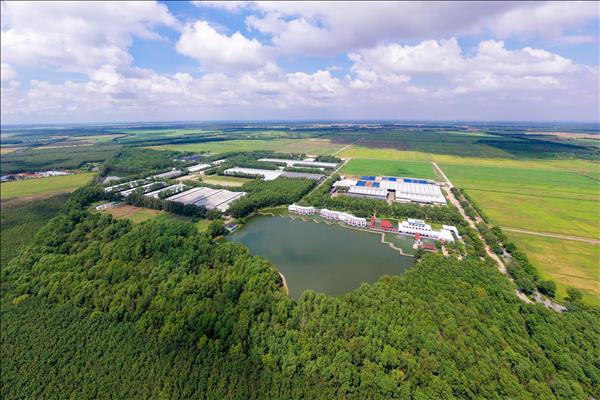Attending the events were representatives from the governments and localities of the GMS member nations, development partners, experts and businesses inside and outside the subregion.
Promoting “3C” Strategy in GMS
To promote the strong engagement of development partners, especially the private sector, in the GMS cooperation programme, Vietnam initiated the organization of the first-ever GMS Business Summit as part of the GMS-6 to strengthen dialogues between the State and businesses as well as to connect GMS enterprises with global partners.
This initiative received high consensus from other GMS member nations and warm support from development partners including the Asian Development Bank (ADB), the World Bank (WB) and the Association of Southeast Asian Nations (ASEAN).
The GMS Business Summit attracted over 2,000 entrepreneurs at home and abroad, which showed their excitement to do business in the GMS countries and their trust in the governments’ open policies and tremendous cooperation opportunities in the GMS and CLV regions.
Furthermore, Asia has been emerging as a driving force for the global economic growth in the 21st century.
The summit also looks to build a post-2022 cooperation vision in the long run and realise the Sustainable Development Goals of the UN 2030 Agenda given significant changes in the region and the world. The GMS cooperation programme needs to define a long-term vision to build a prosperous and integrated subregion and ensure sustainable, harmonious and balanced development as well as promote inclusive growth in the region. It must also ensure that all people enjoy benefits from the globalisation and the fourth Industrial Revolution.
The GMS was established in 1992 as an initiative of the Asian Development Bank (ADB). The GMS Programme is the most complete cooperation programme that involves Vietnam, Laos, Cambodia, Thailand, Myanmar, and China’s Yunnan and Guangxi provinces. It aims to facilitate and promote win-win economic cooperation among the GMS countries.
Vietnam has actively taken part in developing initiatives for enhanced cooperation in the GMS to boost economic growth, strengthen economic connectivity and aid poverty reduction efforts in the region.
At the GMS-6, leaders of the subregion agreed to set major cooperation orientations in the middle term and activate the building of a long-term cooperation vision in the GMS.
The subregion’s leaders adopted three important documents including the Joint Statement of the sixth GMS Summit affirming the countries’ political commitment and determination to increase the role of the cooperation mechanism; the Hanoi Action Plan for 2018-2022 defining major collaboration orientations and measures in key fields in the coming time; and the Regional Investment Framework 2022 providing a list of more than 220 projects worth about 66 billion US dollars.
Promoting all-round CLV cooperation
The 10th Cambodia-Laos-Vietnam Summit on Development Triangle Area (CLV-10) reviewed the implementation of a master plan on regional socio-economic development for 2010-2020 period and mapped out cooperation orientations in the coming time, especially embracing trilateral economic links.
This was the first time leaders of the Asian Development Bank (ADB), the World Bank (WB) and the Association of Southeast Asian Nations (ASEAN) had participated in the summit.
The CLV leaders recognised progresses in the trilateral cooperation over the past time in wide-ranging fields from infrastructure to trade facilitation. They stressed the importance of the CLV cooperation in maintaining peace and stability in the region, supporting socio-economic development in each country, and helping 13 border provinces narrow development gaps.
At the summit, the CLV leaders reiterated their commitment to promoting comprehensive cooperation between the three countries, contributing to the building of integrated, sustainable and prosperous economies in the development triangle area, which is an indispensable part of the ASEAN Community Vision 2025.
They emphasised on the need to strengthen connectivity between the three economies to increase their competitiveness and effective involvement in regional and global value chains and cope with common challenges.
The leaders discussed the expansion of the CLV Development Triangle Area to the entire three nations, yet only the 13 border provinces, and agreed to entrust ministers and experts to study this issue.
The three PMs approved a master plan for CLV connectivity until 2030, which covers major orientations for boosting infrastructure, institutional, economic and people-to-people exchange connectivity.
The establishment of the CLV Development Triangle Area aims to strengthen solidarity and cooperation between the three countries to ensure security and political stability, reduce poverty and develop economy in the region.
The CLV cooperation focuses on security, external affairs, transport, industry, agriculture, trade, investment, social affairs and environmental protection.
The successful hosting of the GMS-6 and CLV-10, one of the country’s most important multilateral external events in 2018, demonstrates Vietnam’s increasing role and position in the region as well as its active contributions to regional cooperation mechanisms.
Promoting “3C” Strategy in GMS
To promote the strong engagement of development partners, especially the private sector, in the GMS cooperation programme, Vietnam initiated the organization of the first-ever GMS Business Summit as part of the GMS-6 to strengthen dialogues between the State and businesses as well as to connect GMS enterprises with global partners.
This initiative received high consensus from other GMS member nations and warm support from development partners including the Asian Development Bank (ADB), the World Bank (WB) and the Association of Southeast Asian Nations (ASEAN).
The GMS Business Summit attracted over 2,000 entrepreneurs at home and abroad, which showed their excitement to do business in the GMS countries and their trust in the governments’ open policies and tremendous cooperation opportunities in the GMS and CLV regions.
Furthermore, Asia has been emerging as a driving force for the global economic growth in the 21st century.
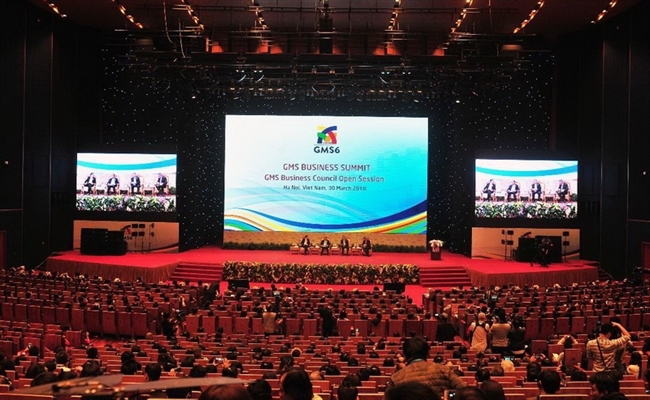 Within the framework of the GMS-6, the GMS Business Council Open Session takes place in Hanoi as the starting activity of the GMS Business Summit. Photo: VNA 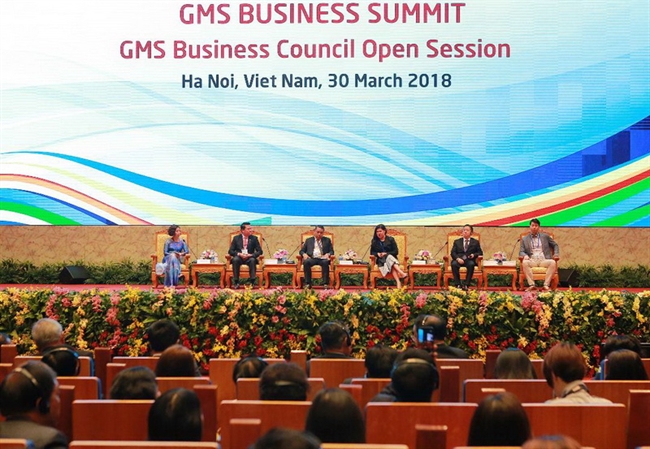 Speakers discuss at the GMS Business Council Open Session. Photo: VNA  The Ministry of Foreign Affairs hosts the sessions with themes, “Infrastructure Development and Financing”, “Agriculture Business and Technology” and “GMS and Global Trade”. Photo: VNA 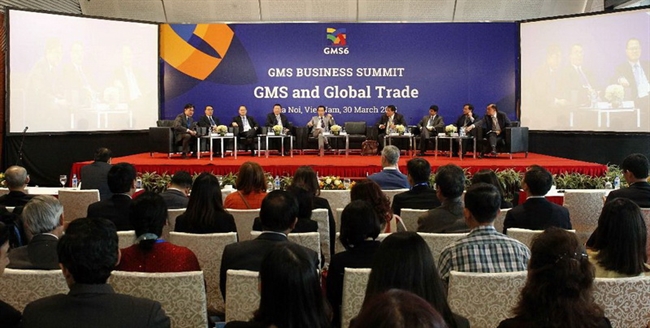 The “GMS and Global Trade” session. Photo: VNA 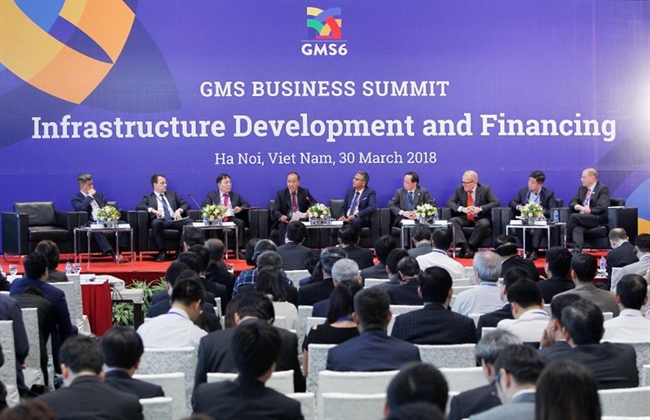 The session of “Infrastructure Development and Financing”. Photo” VNA 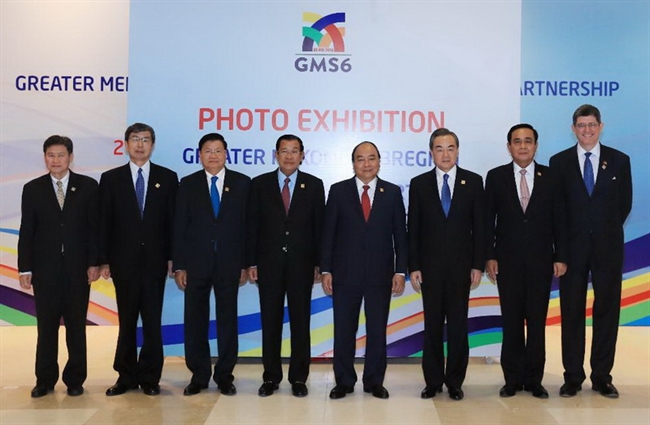 Prime Minister Nguyen Xuan Phuc and GMS leaders attend the opening ceremony of the GMS-6 photo exhibition. Photo: VNA  Within the framework of the GMS-6, Prime Minister Nguyen Xuan Phuc and delegation heads attend the GMS Business Summit. Photo: VNA 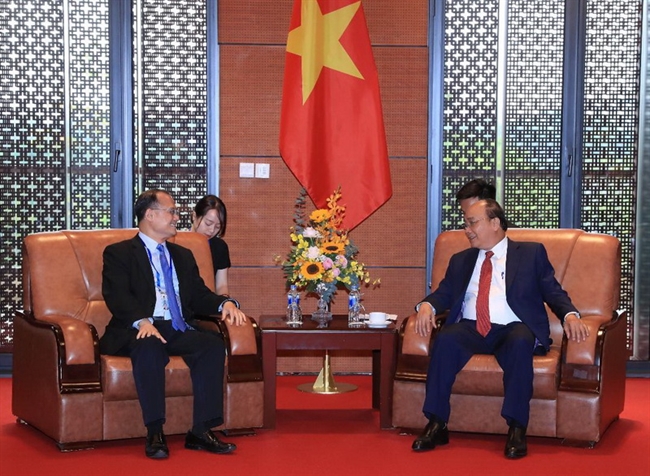 On the occasion, the Vietnamese Prime Minister has reception for Chairman of Sunwah Group (Hong Kong, China) Jonathan Choi. Photo: VNA 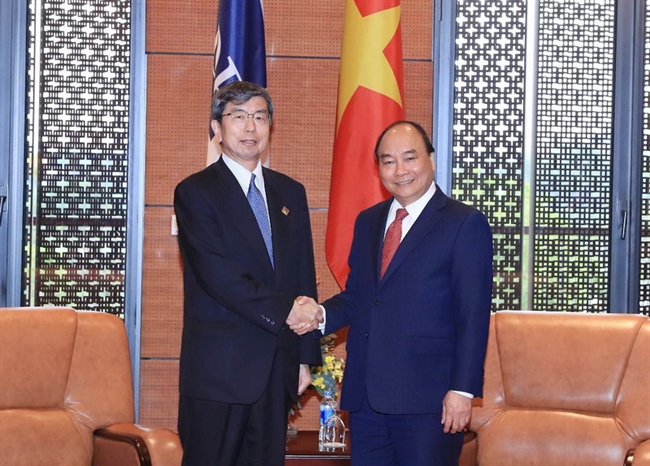 Prime Minister Nguyen Xuan Phuc receives ADB President Takehiko Nakao who was in Vietnam to attend GMS-6. Photo: VNA 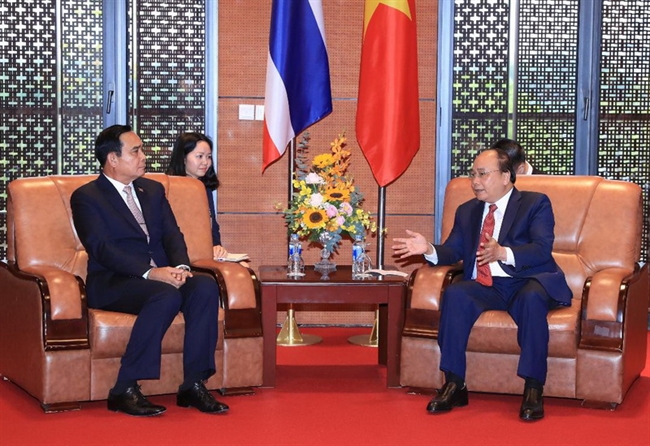 Prime Minister Nguyen Xuan Phuc receives his Thai counterpart Prayuth Chan-ocha on the occasion of GMS-6 in Hanoi. Photo: VNA 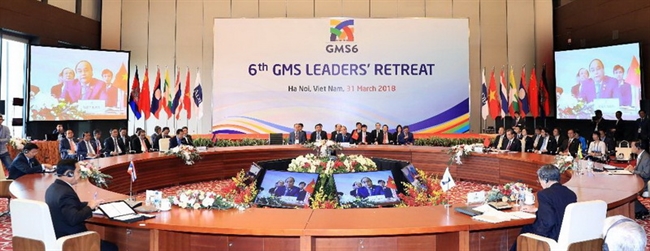 GMS leaders attend the 6th GMS Leaders’ Retreat hosted by Prime Minister Nguyen Xuan Phuc. Photo: VNA 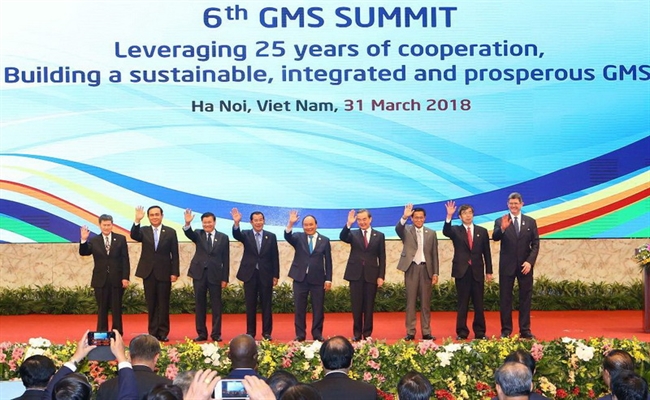 Prime Minister Nguyen Xuan Phuc and delegation heads pose for a photo at the plenary session of the 6th GMS Summit held in Hanoi on March 31. Photo: VNA  The Vietnamese Prime Minister delivers a speech at the plenary session of GMS-6. Photo: VNA 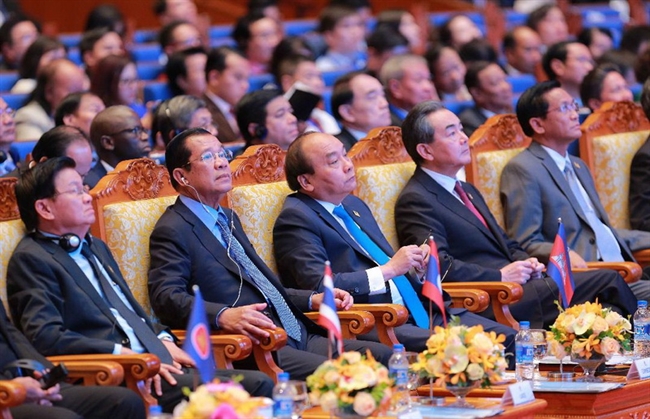 From left, Lao Prime Minister Thongloun Sisoulith, Cambodian Prime Minister Samdech Techo Hun Sen, Prime Minister Nguyen Xuan Phuc, Chinese Foreign Minister Wang Yi, Vice President of Myanmar U Henry Van Thio at the GMS-6 plenary session. Photo: VNA 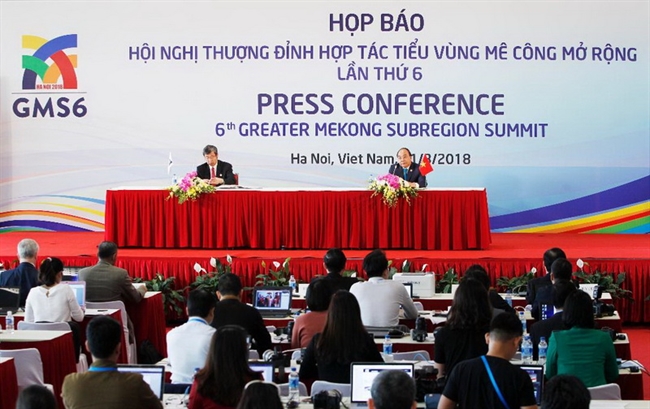 Prime Minister Nguyen Xuan Phuc and ADB President Takehiko Nakao attend a press conference after GMS-6. Photo: VNA |
The summit also looks to build a post-2022 cooperation vision in the long run and realise the Sustainable Development Goals of the UN 2030 Agenda given significant changes in the region and the world. The GMS cooperation programme needs to define a long-term vision to build a prosperous and integrated subregion and ensure sustainable, harmonious and balanced development as well as promote inclusive growth in the region. It must also ensure that all people enjoy benefits from the globalisation and the fourth Industrial Revolution.
The GMS was established in 1992 as an initiative of the Asian Development Bank (ADB). The GMS Programme is the most complete cooperation programme that involves Vietnam, Laos, Cambodia, Thailand, Myanmar, and China’s Yunnan and Guangxi provinces. It aims to facilitate and promote win-win economic cooperation among the GMS countries.
Vietnam has actively taken part in developing initiatives for enhanced cooperation in the GMS to boost economic growth, strengthen economic connectivity and aid poverty reduction efforts in the region.
At the GMS-6, leaders of the subregion agreed to set major cooperation orientations in the middle term and activate the building of a long-term cooperation vision in the GMS.
The subregion’s leaders adopted three important documents including the Joint Statement of the sixth GMS Summit affirming the countries’ political commitment and determination to increase the role of the cooperation mechanism; the Hanoi Action Plan for 2018-2022 defining major collaboration orientations and measures in key fields in the coming time; and the Regional Investment Framework 2022 providing a list of more than 220 projects worth about 66 billion US dollars.
Promoting all-round CLV cooperation
The 10th Cambodia-Laos-Vietnam Summit on Development Triangle Area (CLV-10) reviewed the implementation of a master plan on regional socio-economic development for 2010-2020 period and mapped out cooperation orientations in the coming time, especially embracing trilateral economic links.
This was the first time leaders of the Asian Development Bank (ADB), the World Bank (WB) and the Association of Southeast Asian Nations (ASEAN) had participated in the summit.
The CLV leaders recognised progresses in the trilateral cooperation over the past time in wide-ranging fields from infrastructure to trade facilitation. They stressed the importance of the CLV cooperation in maintaining peace and stability in the region, supporting socio-economic development in each country, and helping 13 border provinces narrow development gaps.
At the summit, the CLV leaders reiterated their commitment to promoting comprehensive cooperation between the three countries, contributing to the building of integrated, sustainable and prosperous economies in the development triangle area, which is an indispensable part of the ASEAN Community Vision 2025.
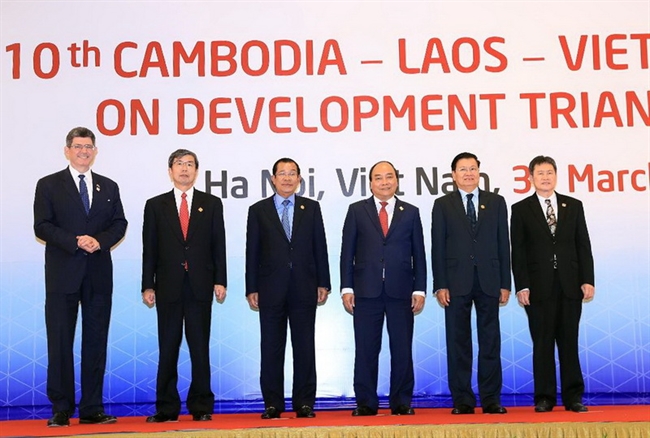 From left, Managing Director and World Bank Group Chief Financial Officer Joaquim Levy, ADB President Takehiko Nakao, Cambodian Prime Minister Samdech Techo Hun Sen, Prime Minister Nguyen Xuan Phuc, Lao Prime Minister Thongloun Sisoulith and ASEAN Secretary-General Lin Jock Hoi pose for a photo at the opening ceremony of CLV - 10. Photo: VNA 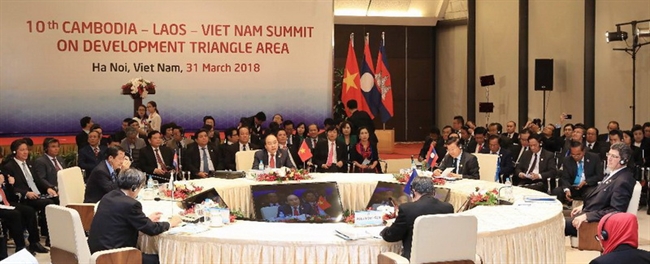 Prime Minister Nguyen Xuan Phuc chairs the CLV-10. Photo: VNA 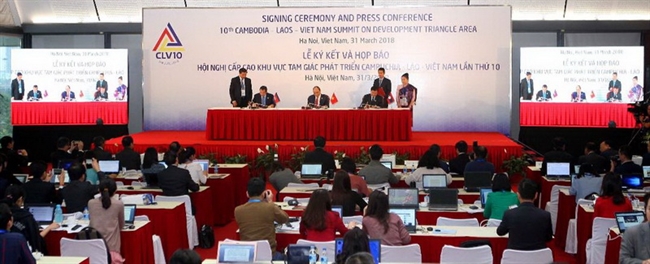 The Prime Ministers of Vietnam, Laos and Cambodia sign the Joint Statement on the Cambodia-Laos-Vietnam (CLV) Development Triangle Area cooperation at the end of the CLV-10 Summit. Photo: VNA 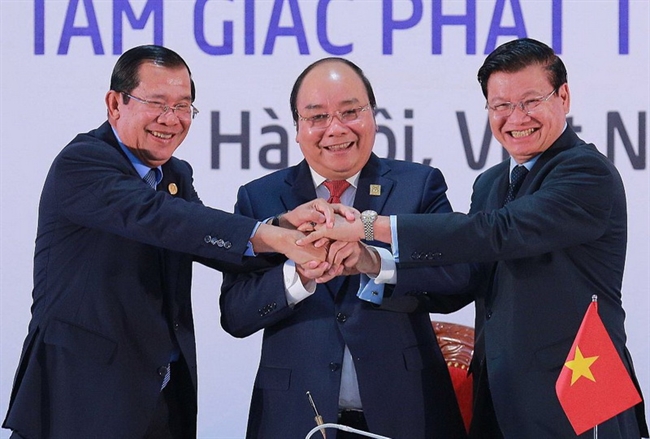 The three leaders express solidarity and cooperation after the signing ceremony. Photo: VNA 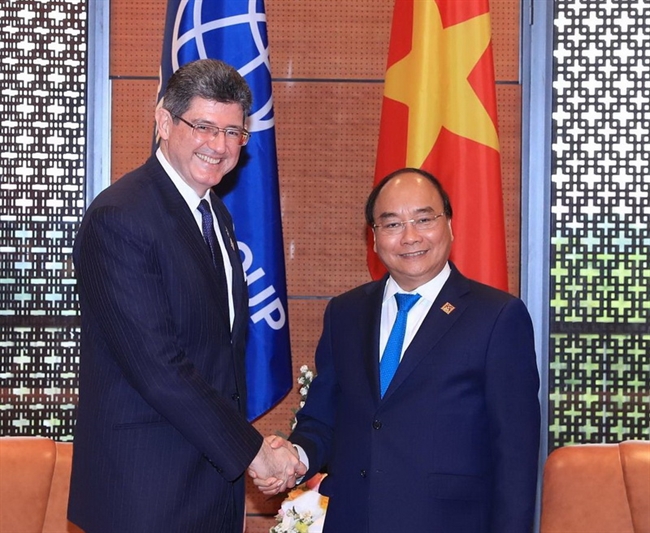 Prime Minister Nguyen Xuan Phuc receives Managing Director and World Bank Group Chief Financial Officer Joaquim Levy who is in Vietnam to attend the event. Photo: VNA 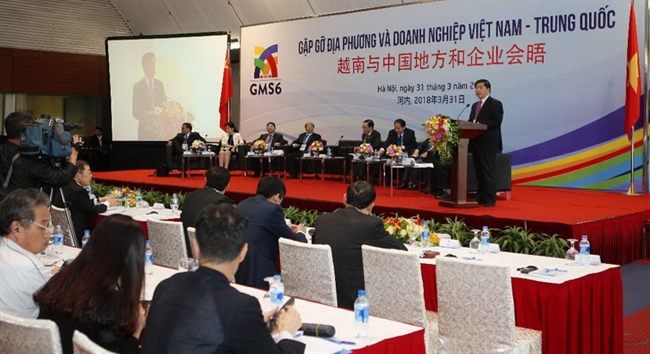 A meeting of localities and businesses of Vietnam and China. Photo: VNA 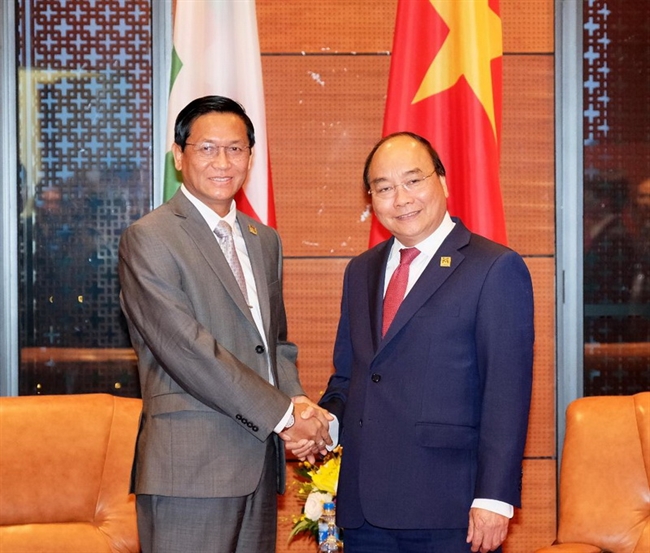 The Vietnamese Prime Minister has a reception for Vice President of Myanmar U Henry Van Thio during his attendance at GMS-6. Photo: VNA |
They emphasised on the need to strengthen connectivity between the three economies to increase their competitiveness and effective involvement in regional and global value chains and cope with common challenges.
The leaders discussed the expansion of the CLV Development Triangle Area to the entire three nations, yet only the 13 border provinces, and agreed to entrust ministers and experts to study this issue.
The three PMs approved a master plan for CLV connectivity until 2030, which covers major orientations for boosting infrastructure, institutional, economic and people-to-people exchange connectivity.
The establishment of the CLV Development Triangle Area aims to strengthen solidarity and cooperation between the three countries to ensure security and political stability, reduce poverty and develop economy in the region.
The CLV cooperation focuses on security, external affairs, transport, industry, agriculture, trade, investment, social affairs and environmental protection.
The successful hosting of the GMS-6 and CLV-10, one of the country’s most important multilateral external events in 2018, demonstrates Vietnam’s increasing role and position in the region as well as its active contributions to regional cooperation mechanisms.
| The CLV Development Triangle Area was established in 1999, covering Vietnam’s Kon Tum, Gia Lai, Dak Lak, Dak Nong provinces; Laos’ Sekong, Attapeu and Saravan provinces; and Cambodia’s Stung Treng, Rattanak Kiri, and Mondul Kiri. In 2009, the three countries agreed to add Vietnam’s Binh Phuoc province, Cambodia’s Kratie province, and Laos’ Champasak province to the area. |
By VNA/VNP

